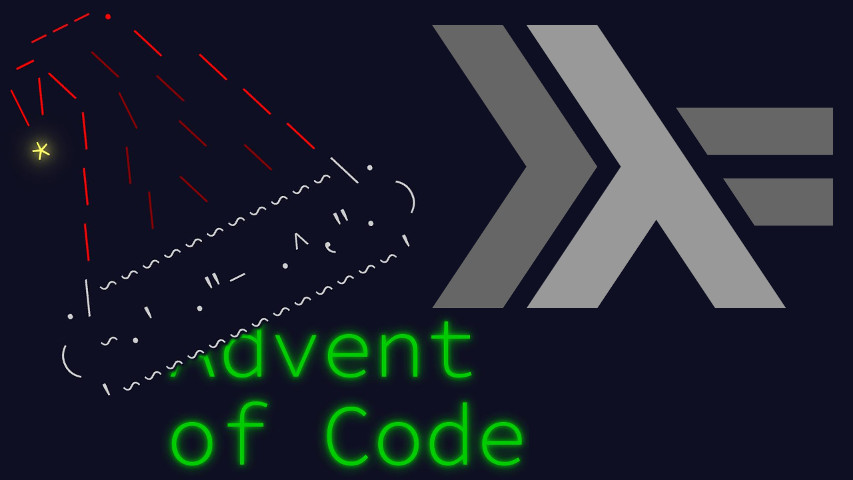For day 12’s puzzle, “Passage Pathing”, we’ll be exploring a cave network. Here are a few imports to start the literate Haskell with:
import Control.Arrow ((&&&))
import Control.Monad.Writer.Strict
import Data.Char (isUpper)
import Data.Map.Strict (Map,(!))
import Data.Proxy (Proxy(Proxy))
import Data.Set (Set,(\\))
import qualified Data.Map.Strict as Map
import qualified Data.Set as SetCaves are provided with a nice human-readable label we can use to refer to them.
type CaveId = StringSome caves are small; some are big. Tell them apart using this neat trick:
isBigCave :: CaveId -> Bool
isBigCave = all isUpperI’ll represent the network topology with standard containers: for each cave I’ll map a set of reachable caves, all referenced by label.
type Graph = Map CaveId (Set CaveId)Reading all this information in is just a simple matter of connecting various combinators together.
parse :: String -> Graph
parse = oneWay . fmap noReturn .
foldr (uncurry (Map.insertWith Set.union)) Map.empty .
concatMap readEdge . lines
where
readEdge (break (== '-') -> (a,'-':b)) =
[(a,Set.singleton b),(b,Set.singleton a)]
oneWay = Map.insert "end" Set.empty
noReturn = Set.delete "start"The readEdge internal function takes charge of making
edges bidirectional. Later in the statement, the two edges
start and end are given special treatment by
being declared source-only and sink-only. I handle that directly at
parse time by post-processing the adjacency lists to not allow moving
back to start, and adjusting the graph not to be able to
leave end.
We can now write out a fairly generic DFS that specifically performs a tallying operation when reaching a final node:
dfs :: forall s. Node s => Proxy s -> Graph -> Sum Int
dfs _ g = execWriter (go (start @s)) where
go n = when (isFinal n) (tell (Sum 1)) *>
mapM_ go (visit g n)It’s so generic we’re to bring it our own node class.
class Node s where
start :: s
isFinal :: s -> Bool
visit :: Graph -> s -> [s]In part 1 the movement rules are to never visit a small cave twice. We can keep track of this by remembering which small caves we’ve visited.
data Part1 = P1 CaveId (Set CaveId) deriving ShowThe Node instance is then a typical DFS’s, with the
small specificity that big caves are ignored when managing the closed
set.
instance Node Part1 where
start = P1 "start" Set.empty
isFinal (P1 c _) = c == "end"
visit g (P1 c cl) = map (\c' -> P1 c' cl') (Set.elems cs)
where cl' | isBigCave c = cl
| otherwise = Set.insert c cl
cs = g!c \\ clIn part 2, we’re allowed to revisit a single small cave once. We can handle this with minimal change by tracking an additional boolean value: “have we visited a small cave twice already?”
data Part2 = P2 CaveId Bool (Set CaveId) deriving ShowThe start and isFinal methods are simple
adjustment to the added parameter in the data structure.
instance Node Part2 where
start = P2 "start" False Set.empty
isFinal (P2 c _ _) = c == "end"(It’s also where we “explicitly” accept reaching the end cave with or without having visited a small cave twice.)
The visit method will have to be altered:
- The list of neighbors to visit from a cave now has two possibilities: before visiting a small cave twice we move unrestrictedly anywhere; afterwards we subtract the closed set as in part 1.
- The closed set handling is where we’ll detect we’re visiting a small cave for the second time.
visit g (P2 c db cl) = map (\c' -> P2 c' db' cl') (Set.elems cs)
where (db',cl') | isBigCave c = (db,cl)
| c `Set.member` cl = (True,cl)
| otherwise = (db,Set.insert c cl)
cs | db' = g!c \\ cl
| otherwise = g!cA simple wrapper dispatches it all.
main :: IO ()
main = interact $ show . (dfs (Proxy @Part1) &&& dfs (Proxy @Part2)) . parseThis concludes today’s solution. See you tomorrow!



